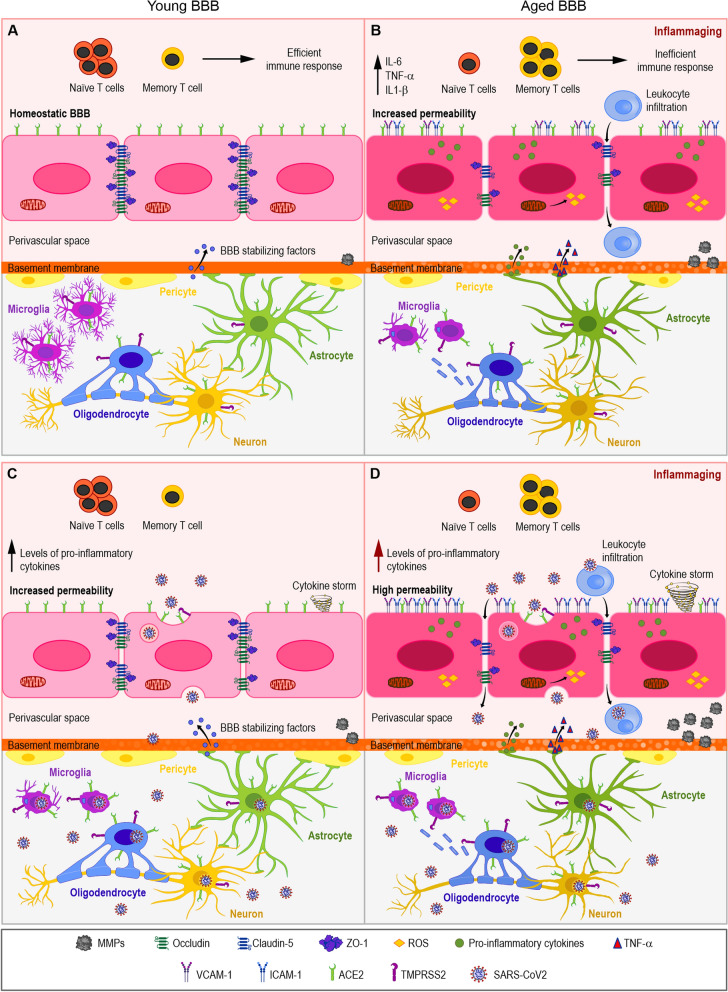Fig. 1.
Proposed model of aging as a cofactor to COVID-19 neuropathogenesis. Neural cells express variable levels of SARS-CoV-2 receptors, such as ACE2 and TMPRSS2, shown in BMECs, microglia, astrocytes, neurons and pericytes (A). Young brain parenchyma is protected by the BBB, with low paracellular transport and high levels of TJ proteins, including zona occludens, claudins and occludins (A). Aged BBB (B) displays increased permeability as well as increased expression of adhesion molecules such as ICAM-1 and VCAM-1 and the phenomenon of inflammaging, that includes increased levels of pro-inflammatory cytokines (IL-6, TNF-α and IL-1β), reduction of circulating Naïve T cells and increase in memory T cells and mitochondrial dysfunction (B). SARS-CoV-2 infection of young hosts induce cytokine storm (C), destabilization of the BBB and increase in circulating and local levels of pro-inflammatory molecules, basement membrane abnormalities due to increased MMPs and infection of neural cell types, including neurons, oligodendrocytes, microglia and BMECs. Aged BBB (D) may display highly increased permeability and endothelial activation, with expression of adhesion molecules, striking presence of cytokine storm with neuronal loss or atrophy, demyelination and increased microglial activation

